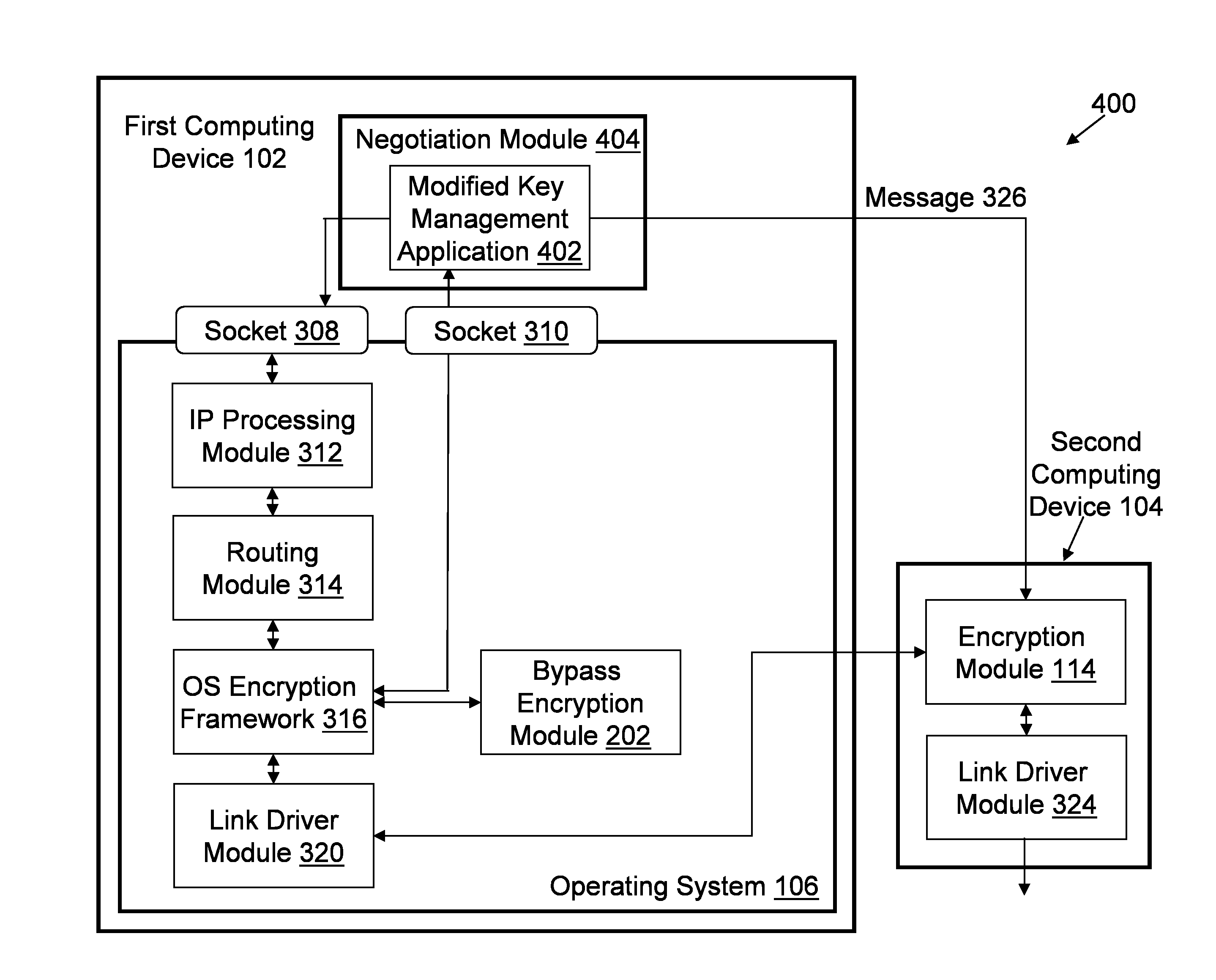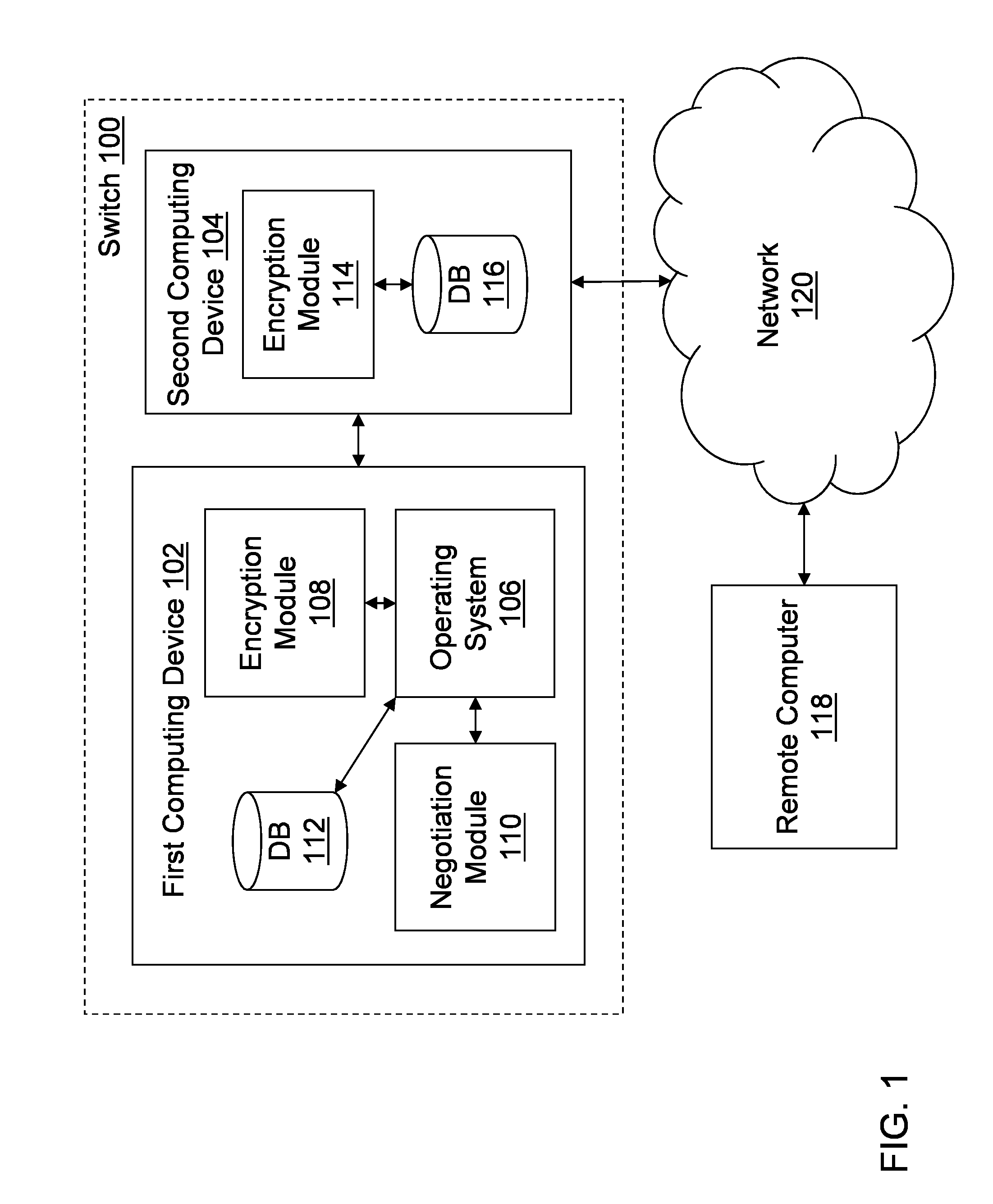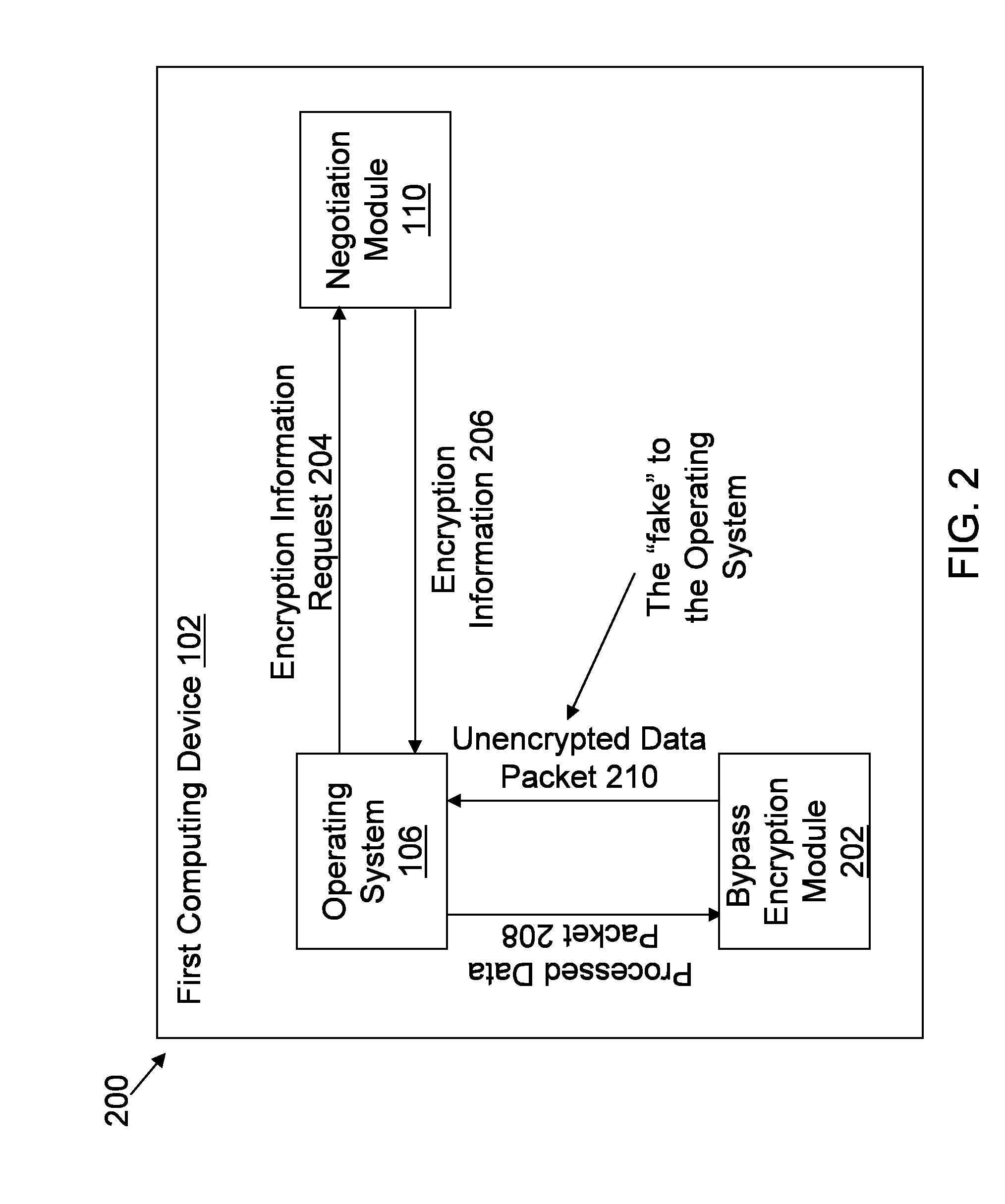Loosely-Coupled Encryption Functionality for Operating Systems
- Summary
- Abstract
- Description
- Claims
- Application Information
AI Technical Summary
Benefits of technology
Problems solved by technology
Method used
Image
Examples
first embodiment
[0055]FIG. 2 illustrates an architectural diagram 200 of the operating system 106 from FIG. 1 being faked to not encrypt a processed data packet according to a The operating system 106 is in communication with the negotiation module 110 and the bypass encryption module 202. The operating system 106 sends an encryption information request 204 (e.g., key negotiation request) to the negotiation module 110. The negotiation module sends encryption information 206 (e.g., SA info) to the operating system 106. The operating system 106, using the encryption information 206, sends the processed data packet 208 (e.g., via a scatter / gather API) to the bypass encryption module 202. The bypass encryption module 202 executes a bypass encryption routine to generate an unencrypted data packet 210. The bypass encryption module 202 transmits the unencrypted data packet 210 to the operating system 106.
[0056]The operating system 106 is faked into processing the unencrypted data packet 210 as if the une...
second embodiment
[0099]FIG. 8 illustrates an architectural diagram 800 of an operating system 106 in the first computing device 102 of FIG. 1 being faked to not encrypt a processed data packet according to a The operating system 106 is in communication with the negotiation module 110 and a null encryption module 802. The operating system 106 sends an encryption information request 804 (e.g., key negotiation request) to the negotiation module 110. The negotiation module sends modified encryption information 806 to the operating system 106. The operating system 106, using the modified encryption information 206, sends the processed data packet 808 (e.g., via a scatter / gather API) to the null encryption module 802. The null encryption module 802 executes a null encryption routine to generate an unencrypted data packet 810. The bypass encryption module 802 transmits the unencrypted data packet 810 to the operating system 106.
[0100]The operating system 106 is faked into calling the null encryption modul...
PUM
 Login to View More
Login to View More Abstract
Description
Claims
Application Information
 Login to View More
Login to View More - R&D Engineer
- R&D Manager
- IP Professional
- Industry Leading Data Capabilities
- Powerful AI technology
- Patent DNA Extraction
Browse by: Latest US Patents, China's latest patents, Technical Efficacy Thesaurus, Application Domain, Technology Topic, Popular Technical Reports.
© 2024 PatSnap. All rights reserved.Legal|Privacy policy|Modern Slavery Act Transparency Statement|Sitemap|About US| Contact US: help@patsnap.com










